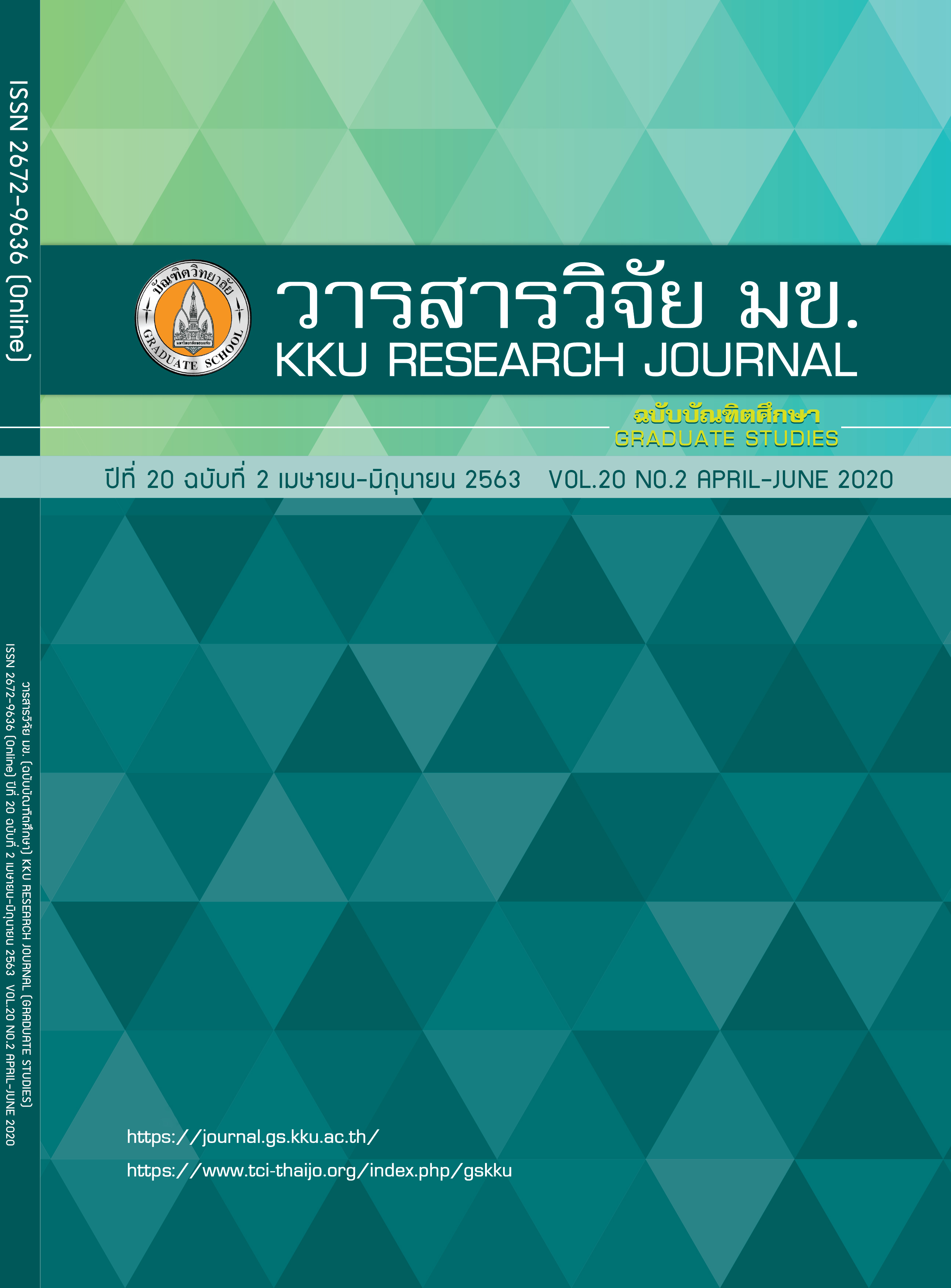Area-Wide Multicriteria Traffic Environmental Impacts Evaluation: Khon Kaen City Case Study
Keywords:
Area-wide traffic environmental impacts, Analytic Hierarchy Process (AHP), Multi Criteria Decision Making (MCDM)Abstract
Various urban areas in global cities have experienced rapid growth of urbanization, economy and motorization. One of the most important adverse effects of such growth is traffic environmental impacts (eg air pollution, noise levels, climate change). The estimation and prediction of traffic environmental impacts were difficult and complicated by several of environmental impact factors, differences in the relative importance of these criteria in different land-use types and the differences in awareness of environmental impacts in individual or group judgments. In this research, mathematical modelling method (MMM) was applied to quantify traffic environmental impacts and Multi Criteria Decision Making (MCDM) approach were adopted to estimate the Composite Area-wide Traffic Environmental Impact Evaluation (CATEII) indices. Such composite indices can be utilized to integrate multiple criteria traffic environmental impacts scores. This composite indices (CATEII) is capable of identifying and prioritizing the area-wide traffic environmental problem locations. When the likely causations of the problems can be specified, the appropriate treatments can be recommended accordingly.
References
Chavez-Baeza C, Sheinbaum-Pardo C. Sustainable passenger road transport scenarios to reduce fuel consumption, air pollutants, and GHG (greenhouse gas) emissions in the Mexico City metropolitan area. Energy. 2014; 66: 624–634.
Widiantono DJ, Samuels S E. Towards a general model for the environmental capacity of roads. Proceedings of the 9th Road Engineering Association of Asia and Australasian (REAAA) Conference. 1998; 9(1): 287-292.
Klungboonkrong P. Sustainable Urban Transportation Planning: Principle and Practice. Sustainable infrastructure research and development center. Faculty of civil engineering KhonKaen University; 2018; 349-385.
Klungboonkrong P, Taylor MAP. A multicriteria environmental sensitivity evaluation of urban road networks: the Khon Kaen case study. Thailand. In the 1st Asia Pacific Conference on Transportation and the Environment. 1998; 260-268.
Shiran G, Hidas P. Area-wide environmental capacity based on air pollution: an urban development evaluation tool. Proceedings of the 18th Australian Road Research Board Transport Research Conference and Transit NZ Land Transport Symposium. 1996; 18(6): 249-263.
Woolley JE, Klungboonkrong P, Taylor MAP. Some considerations of network traffic noise and a decision support system. WIT Transactions on The Built Environment. 1970; 26.
Klungboonkrong P, Taylor MAP. A microcomputer-based-system for multicriteria environmental impacts evaluation of urban road networks. Computers, Environment and Urban Systems. 1998; 22(5): 425-446.
Moran J, NaSuwan C, Poocharoen OO. The haze problem in Northern Thailand and policies to combat it: A review. Environmental Science & Policy. 2019; 97: 1-15.
United Nation UN. The Sustainable Development Goals Report. New York. USA. 2016.
Environment Protection Authority (EPA). PM2.5 particles in air [Internet]. 2017 [updated 2018 May 10]. Available from: https://www.epa.vic.gov.au/~/media/Publications/1709.pdf
Pollution Control Department. Air Pollution and Air Pollution Management Plan in Bangkok from 2012 - 2016. Bangkok: Pollution Control Department. Ministry of Natural Resources and Environment. 2012.
Long S. The consequences of electric vehicle and mass transit system development and land use planning on the transport related performances and energy and environmental aspects: the Khon Kaen case study. Department of Civil Engineering, Faculty of Engineering, Khon Kaen University, Thailand. 2017.
Schulze RH, Turner DB. Practical guide to atmospheric dispersion modeling. Trinity Consultants, Incorporated; 1996.
OTP. The Study to Develop Master Plan for Sustainable Transport Systemand Mitigation of Climate Change Impacts, Bankok, Thailand; 2015.
UK DoT. Calculation of Road Traffic Noise (CoRTN). London: UK Department of Transport, Welsh Office; 1988.
Saaty TL, Vargas LG. The Decision by the US Congress on China’s Trade Status: A Multicriteria Analysis. In: Models, Methods, Concepts & Applications of the Analytic Hierarchy Process. International Series in Operations Research & Management Science, vol 34. Springer, Boston, MA. 2001.
Singleton DJ, Twiney PJ. Environmental sensitivity of arterial roads, Papers of the Australian Transport Research Forum. 1985; 10(2): 165-182.
Saaty TL. The analytical hierarchy process. Priority setting, resource allocation. New York: McGraw-Hill international book; 1980.



